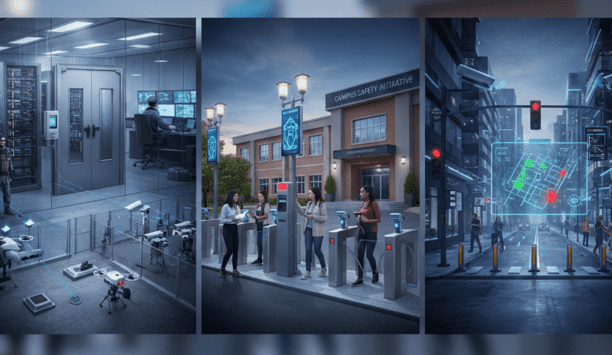 |
Cloud-based services for video surveillance or hosted access control are garnering more attention in the physical security industry. Most people today are already using or are familiar with cloud-based applications in their day-to-day life, so it will only be a matter to time before the benefits of the cloud permeate security and business solutions.
Dealers looking to embrace the cloud model for access control must re-think multiple aspects of how they are set up as an organisation, says Lee Odess, vice president of marketing, Brivo Systems. “If you are in the business of selling monthly services (such as access control in the cloud), you need billing for monthly services. How do you compensate your sales people? If you’re used to selling individual jobs, how is it different to take out the software costs and bill them monthly?”
“Instead of just reintroducing the same old thing, the cloud is disrupting the status quo,” says Odess. “So you have to educate people what to do.”
Many end users aren’t even aware that they are already using the cloud, for example with services like Gmail. “Awareness and adoption are increasing, but it is not as mainstream as what the rest of the access control market is doing,” says Odess. “We’re having to educate security on IT and IT on security, convergence of all the different worlds. Business owners in the security world have to understand the IT world.”
Among other benefits, the cloud enables real-time system health monitoring to provide meaningful data about system status to the integrator to resolve issues cost-effectively and in a timely manner. Centrally controlled, distributed systems will use a single identity to provide access control data to systems across a wide area.
Another benefit is the cost savings to an end user of not having a physical server. Maintaining a server on premises requires a temperature-controlled room and resources devoted to managing and monitoring system software updates, power consumption, hardware failure and hacker attacks. Using a SaaS/cloud-based approach to the management of an access control system can mitigate many headaches for an overall solution, says Jason Ouellette, product line director, access control, Tyco Security. Updates and upgrades can be run in the background, and staff support can be outsourced.
 |
| New wearable devices that "know" the wearer’s identity should be able to make real-time decisions |
Another factor related to cloud-based access control is the increase of mobile adoption, which will transform the expectations of how access control systems function and what the features are, says Odess.
Expectations of end users will challenge the use of cards. Instead, they will expect “social identities,” such as Facebook log-ins, to work with access control systems. In the cybersecurity world, the idea of single sign-in has already gained traction – witness how a Facebook identity can be used to log into a fantasy football league.
“Our belief is that access control systems should be using a single sign-on for the physical world,” says Odess. “I will log in with my social log-in, and the access control system can say, based on the information, I will confirm that it’s you and let you into the facility. It’s not just about a given identity (a card or key fob). It’s more natural to express who we are through mobile devices, and places need to be smart enough to respond.”
For example, use of Bluetooth Low Energy can communicate who a person is and automatically log them in and unlock a door. Then it could send notification to alert someone to greet the visitor.
Odess sees a need to bring convenience to the security market. For example, new wearable devices (such as Google glass or Apple Watch) that “know” the wearer’s identity should be able to communicate with systems to make real-time decisions to let people in or out. Also, there are benefits beyond access control, such as using a social identity to turn on the lights or direct the content of digital signage.
“The pace and impact of these changes shouldn’t be overlooked. “It’s something we as an industry can’t put our head in the sand about,” says Odess. “It’s happening.”
Embracing the cloud is an important first step.
Learn why leading casinos are upgrading to smarter, faster, and more compliant systems














































